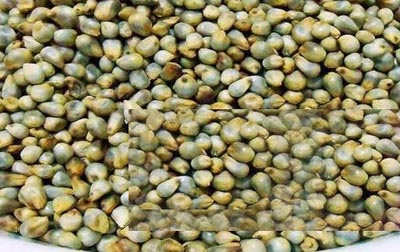

Pearl millet is well adapted to growing areas characterized by drought, low soil fertility, and high temperature. It performs well in soils with high salinity or low pH. Because of its tolerance to difficult growing conditions, it can be grown in areas where other cereal crops, such as maize or wheat, would not survive. Pearl millet is a summer annual crop well-suited for double cropping and rotations.

Consumption of the minor millets has been practiced since the beginning of the ancient civilizations of the world. Generally, the millets are small-grained, annual, warm-weather cereals belonging to grass family. They are highly tolerant to extreme weather conditions such as drought and are nutritious compared to the major cereals such as rice and wheat. They contain low phytic acid and are rich in dietary fiber, iron, calcium, and B vitamins. Moreover, these millets release sugar slowly in the blood and also diminish the glucose absorption. These properties of the minor millets made the present consumers attracted to the consumption of millet.

Millets are gluten free, rich in fiber, proteins, minerals and vitamins. Besides being gluten-free, millets have higher nutritional value than wheat, especially phosphorus and iron. Its fiber content also helps prevent constipation and may reduce the risk of developing bowel disorders. Millets are easy to digest, contain a high amount of lecithin and are excellent for strengthening the nervous system (source-Hindu).They contain complex carbohydrates which breaks down slowly and hence good for diabetic patients.

Kuthiraivali rice is 6 times more nutritious than wheat. Rich in Protein, fiber, minerals and iron compared to all other grains. Good for Heart Related problems, Anemic, Mensural Disorder and Diabetics.

Cashew nuts are native to Brazil, where they have long been viewed as a delicacy. More recently, cashews have become popular throughout the world for their delicate flavor and extraordinary health benefits. Manufacturers always sell cashews in their shelled state, as part of the shell contains a resin that is not safe for consumption. However, it is possible to purchase raw cashews, roasted cashews, or cashews that have been seasoned with various flavorings. This means you can use them as a snack or as an addition to salads, smoothies, stir-fries and other meals. With each serving of cashews, you harness incredible health benefits that set them apart from other nuts.

The peanut, also known as the groundnut,goober, or monkey nut (UK), and taxonomically classified as Arachis hypogaea, is a legume crop grown mainly for its edible seeds. It is widely grown in the tropics and subtropics, being important to both small and large commercial producers. It is classified as both a grain legume and, due to its high oil content, an oil crop.World annual production of shelled peanuts was 44 million tonnes in 2016, led by China with 38% of the world total. Atypically among crop plants, peanut pods develop underground (geocarpy) rather than aboveground. With this characteristic in mind, the botanist Linnaeus named the species hypogaea, which means "under the earth."

Coconut oil, or copra oil, is an edible oil extracted from the kernel or meat of mature coconuts harvested from the coconut palm (Cocos nucifera). It has various applications. Because of its high saturated fat content, it is slow to oxidize and, thus, resistant to rancidification, lasting up to six months at 24 °C (75 °F) without spoiling.